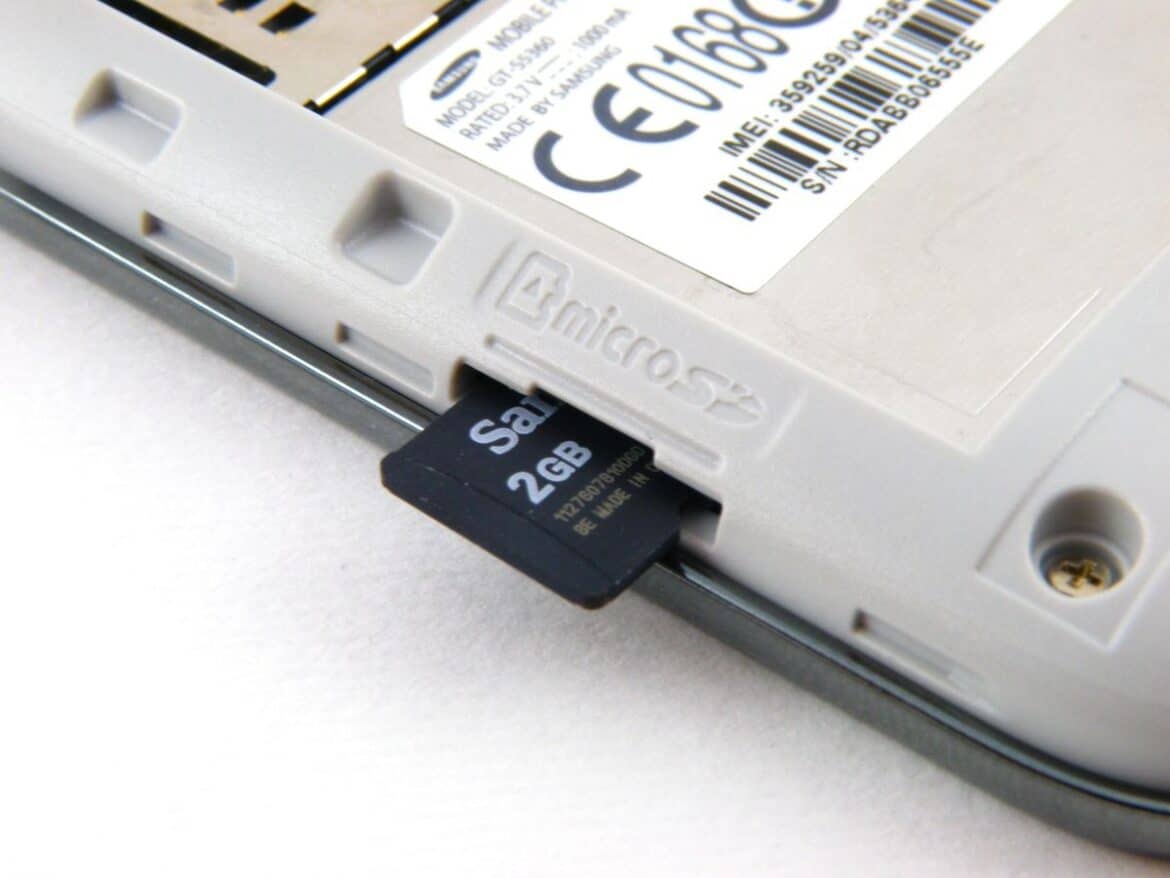Conventional computers do not offer a direct way to connect a microSD memory card to a PC. We’ll show you how it works anyway.
Connecting a microSD memory card to a PC
There are several easy ways to connect a microSD memory card to a PC:
- With an adapter: Since many PCs do not have a direct microSD slot, you usually need an adapter. To do this, you can insert the microSD card into a normal SD card adapter, which then fits into the SD card slot of the PC. Alternatively, there are USB card readers into which you can insert the microSD or SD card and connect to the PC via USB. Adapters are inexpensive and widely available.
- Via smartphone: If your smartphone uses a MicroSD card, you can leave the card in it and connect the smartphone to your PC via a USB cable. This allows you to access and transfer the MicroSD data.
- Directly on the PC: If the PC has a suitable card reader built in (e.g., an SD card slot), the MicroSD card can be inserted directly with an adapter.
- After connecting, the card appears as a removable drive in File Explorer, and you can copy, move, or back up files.
- It is important that the drivers for the card reader are up to date and that the card is not physically damaged. If you use a USB card reader, Windows usually activates the necessary drivers automatically.
- If your PC does not have an internal reader, an external USB card reader is the best solution.
The right file systems and their advantages for microSD cards
The following points will help you choose the right file system for microSD cards based on capacity, compatibility, and intended use. There are several common file systems for microSD cards, each with different advantages and limitations:
- FAT32: Widely used and highly compatible with almost all devices and operating systems, including older ones. Standard file system for microSD cards up to 32 GB. Disadvantage: Maximum file size is limited to 4 GB (i.e., no individual files larger than 4 GB are possible).
- exFAT: Developed by Microsoft specifically for flash memory such as USB sticks and SD cards. Supports very large file sizes (greater than 4 GB) and large storage partitions. Standard file system for microSD cards from 64 GB. Less compatible than FAT32, but works well on newer devices and operating systems (e.g. Windows XP SP2 or higher, Mac OS X 10.6.5 or higher). Ideal for large HD and 4K video files on large memory cards.
- NTFS (English): Modern Windows file system with support for very large files and many features such as rights management. More suitable for continuous use as a hard drive replacement on a PC. However, it is not supported by many cameras, smartphones, and other devices. Less suitable for microSD cards that are to be used in different devices.
- For most modern applications on smartphones, cameras, and similar devices, the choice between FAT32 (for small cards) and exFAT (for large cards) is crucial. NTFS is usually only recommended if the microSD card is mainly used with Windows and compatibility with other devices is not necessary.
- The devices themselves often automatically format the card appropriately when it is inserted (e.g., Android smartphones format microSD cards up to 32 GB in FAT32 and 64 GB and above in exFAT).
- If you use microSD cards for special purposes, such as fast video recording or app storage, you should also consider the speed class of the card in addition to the file system.
If the microSD card is not recognized on the PC: Tips and tricks
The steps described below provide comprehensive instructions for troubleshooting the most common causes of a microSD card not being recognized on a PC. If all measures fail, the card itself may be defective and need to be replaced. If a microSD card is not recognized by your PC, the following solutions may help:
- Clean the SD card and card slot: Carefully clean the contacts of the microSD card with a microfiber cloth or cotton swab (do not use water). Also check the SD card slot for dust or dirt and clean it carefully, e.g. by blowing gently into it.
- Test another card reader or PC. Test the microSD card in another card reader or on another PC to rule out hardware defects.
- Check and update drivers: In Windows Device Manager, check whether the SD card reader is installed correctly and does not display any warning signs. If necessary, uninstall and reinstall or update the card reader driver.
- Assign a drive letter manually: In Windows Disk Management, check whether the microSD card has been assigned a drive letter. If not, you can add or change the drive letter by right-clicking on the partition.
- Run CHKDSK: Use the command prompt to run the command (X = drive letter of the microSD card) to fix file system errors.chkdsk X: /f
- Check for write protection: Some microSD cards or adapters have a write protection switch. Make sure that this is not activated.
- Formatting as a last resort: If Windows indicates that the card needs to be formatted, you can format it. However, this will result in the loss of all data. If necessary, recover any important data beforehand.
- Restart your PC: Sometimes, simply restarting your PC helps to update hardware detection.

